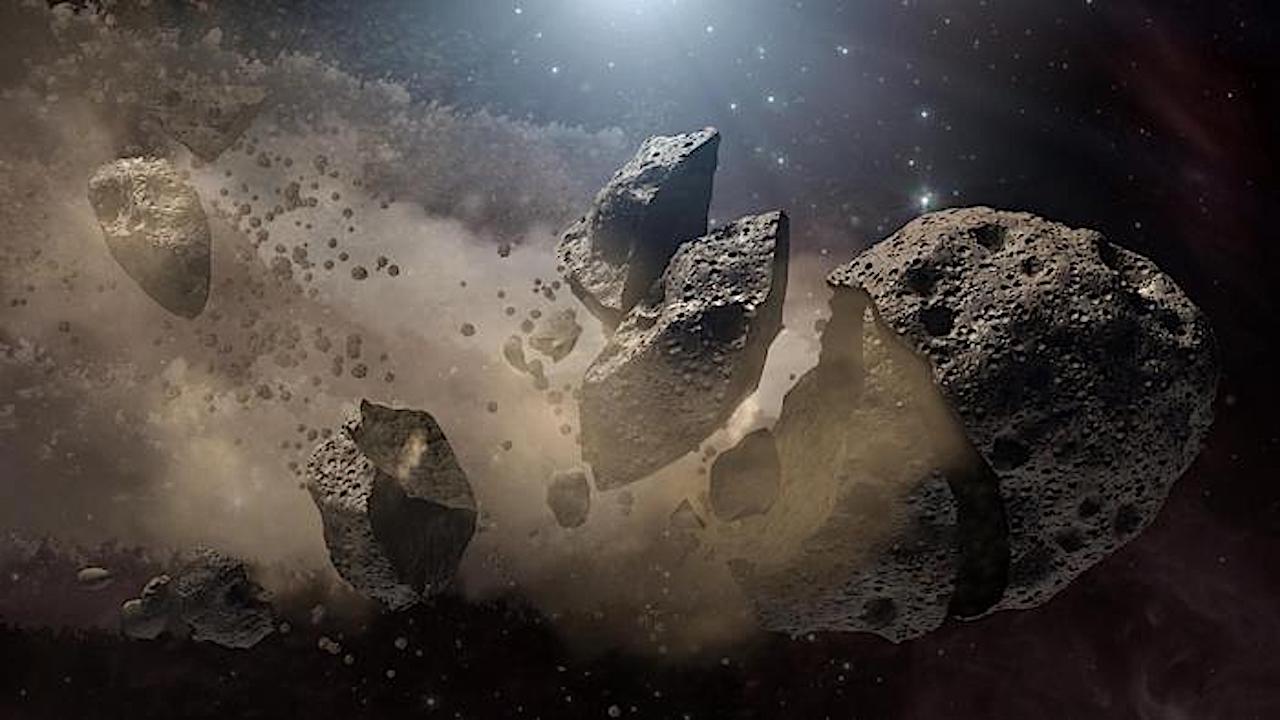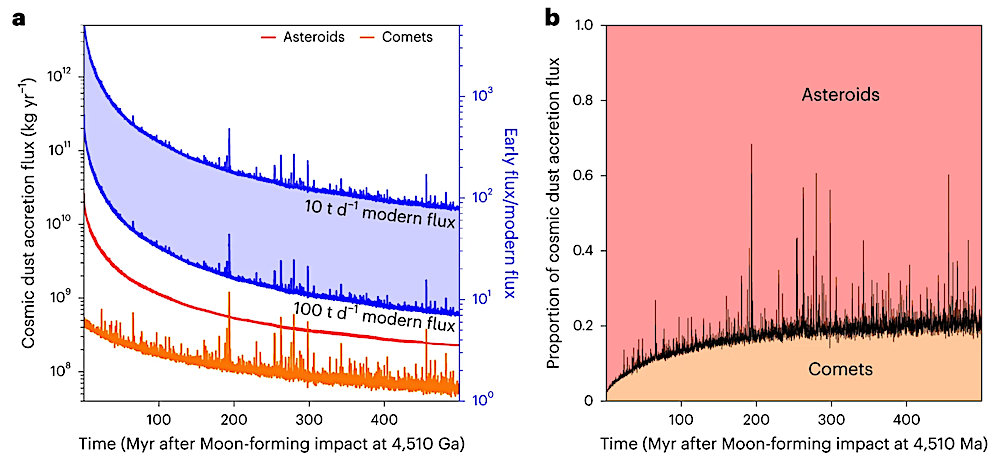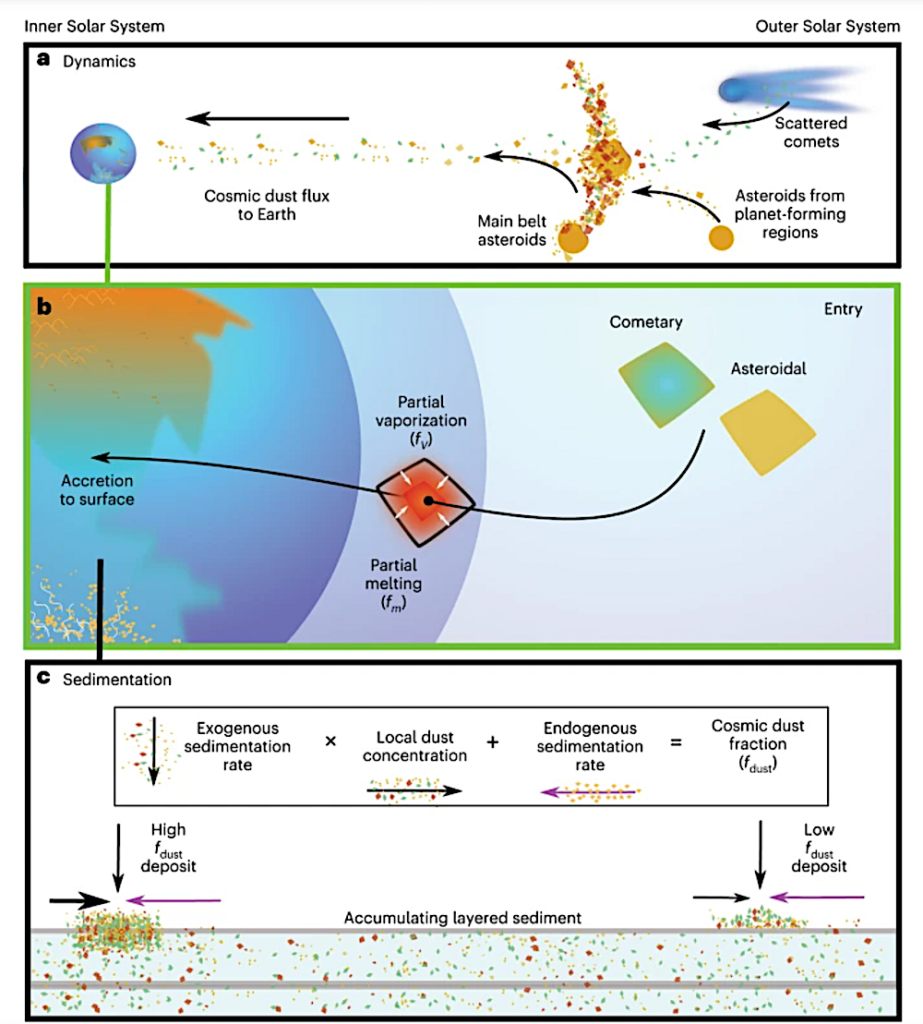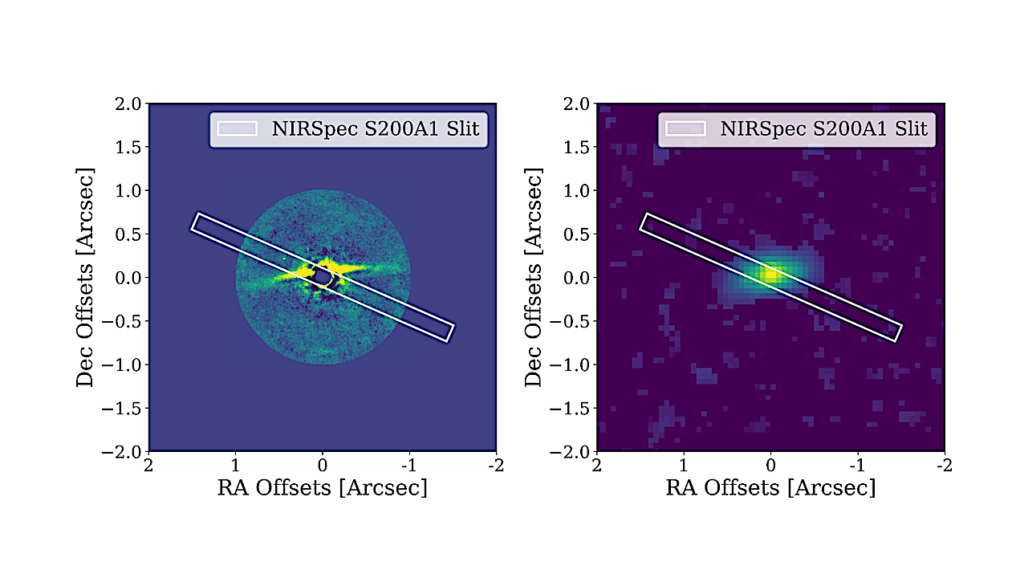Do We Have Cosmic Dust To Thank For Life On Earth?

Before life existed on Earth, there had to be chemistry to form organic molecules from the chemical elements nitrogen, sulphur, carbon and phosphorus.
For the corresponding chemical reactions to start and be maintained, these elements had to be present in abundance – and constantly replenished. On the Earth itself, however, these elements were and still are in short supply.
In fact, the elementary building blocks of life were so rare that chemical reactions would have quickly become exhausted, if they indeed ever managed to get going at all. Geological processes such as erosion and weathering of the Earth’s constituent rocks were also unable to ensure a sufficient supply, as the Earth’s crust simply contained too few of these elements. Nevertheless, in the first 500 million years of Earth’s history, a prebiotic chemistry developed that produced organic molecules such as RNA, DNA, fatty acids and proteins, on which all life is based.
Ingredients from outer space?
Where did the required quantities of sulphur, phosphorus, nitrogen and carbon come from? Geologist and Nomis Fellow Craig Walton is convinced that these elements came to Earth primarily as cosmic dust.
This dust is created in space, for example when asteroids collide with each other. Even today, around 30,000 tonnes of dust still fall to Earth from space each year. In the early days of the Earth, however, the dust rained down in much greater volumes, amounting to millions of tonnes per year. Above all, however, the dust particles contain a lot of nitrogen, carbon, sulphur and phosphorus. They would therefore have the potential to set a chemical cascade in motion.
However, the fact that the dust disperses widely and can be found only in very small quantities in any one place speaks against this. “But if you include transport processes, things look different,” Walton says. Wind, rain or rivers collect cosmic dust over a large area and deposit it in concentrated form at certain locations.
New model to clarify the question
To find out whether cosmic dust could possibly be the source that jump-started prebiotic chemistry (reactions), Walton developed a model together with colleagues from the University of Cambridge.
Using the model, the researchers simulated how much cosmic dust fell to Earth in the first 500 million years of our planet’s history and where it could have accumulated on the Earth’s surface. Their study has now been published in the scientific journal Nature Astronomy.
The model was developed in collaboration with sedimentation experts and astrophysicists from the University of Cambridge. The British researchers specialise in the simulation of planetary and asteroid systems.
Their simulations show that there could have been places on the early Earth with an extremely high concentration of cosmic dust. And that supplies were constantly replenished from space. However, the dust rains decreased rapidly and sharply after the formation of the Earth: after 500 million years, the dust flow was an order of magnitude smaller than in the year zero. The researchers attribute occasional upward spikes to asteroids that broke apart and sent a tail of dust towards the Earth.

a, Total flux and individual fluxes of different cosmic dust populations, divided by parent body type. b, Proportions of the total accretion flux of cosmic dust represented by each population over time. Boundaries between the proportion of each dust source are demarcated with solid black lines. ETH Zurich/Nature Astronomy.
Melt holes on ice sheets as dust traps
Most scientists, but also laypeople, assume that the Earth was covered by a magma ocean for millions of years; this would have prevented the transport and deposition of cosmic dust for a long time. “However, more recent research has found evidence that the Earth’s surface cooled and solidified very quickly and that large ice sheets formed,” Walton says.
According to the simulations, these ice sheets could have been the best environment for the accumulation of cosmic dust. Melt holes on the glacier surface – known as cryoconite holes – would have allowed not only sediments but also dust grains from space to accumulate.
Over time, the corresponding elements were released from the dust particles. As soon as their concentration in the glacial water reached a critical threshold value, chemical reactions began of their own accord, leading to the formation of the organic molecules that are the origin of life.
It is quite possible that chemical processes got underway even at the icy temperatures that prevail in the melt holes: “Cold doesn’t disrupt organic chemistry – on the contrary: reactions are more selective and specific at low temperatures than at high temperatures,” Walton says. Other researchers have shown in the lab that simple ring-shaped ribonucleic acids (RNA) form spontaneously in such meltwater soups at temperatures around freezing and then replicate themselves. A weak point in the argument could be that at low temperatures, the elements required to build up the organic molecules dissolve only very slowly from the dust particles.
Initiating debate on the origin of life
The theory that Walton has put forward is not uncontroversial in the scientific community. “This study will certainly trigger a contentious scientific debate,” Walton says, “but it will also give rise to new ideas about the origin of life.”
As early as the 18th and 19th centuries, scientists were convinced that meteorites brought the “elements of life”, as Walton calls them, to Earth. Even then, researchers found large quantities of these elements in rocks from space, but not in the bedrock of the Earth. “Since then, however, hardly anyone has considered the idea that prebiotic chemistry was set in motion primarily by meteorites,” Walton says.
“The meteorite idea sounds compelling, but there’s a catch,” Walton explains. A single meteorite supplies these substances only in a limited environment; where it hits the ground is random, and further supplies aren’t guaranteed. “I think it’s unlikely that the origin of life depends on a few widely and randomly scattered pieces of rock,” he says. “Enriched cosmic dust, on the other hand, I think makes for a plausible source.”
Walton’s next step will be to test his theory experimentally. In the laboratory, he will use large reaction vessels to recreate the conditions that might have prevailed in the primaeval melt holes, then set the initial conditions to those that probably existed in a cryoconite hole four billion years ago – and, finally, wait to see whether any chemical reactions of the kind that produce biologically relevant molecules do indeed develop.

a–c, Schematic illustrations of factors considered in this study related to the formation of terrestrial sediments rich in cosmic dust. a, Dynamical sources of cosmic dust grains. Comets (undifferentiated) scattered inwards from the outer Solar System disintegrate to produce dust particles. Asteroids predominantly generate dust through collisions. b, Atmospheric entry of cosmic dust involves partial melting (fm) and partial vaporization (fv), both of which influence the final mass of cosmic dust per unit mass of total sediment in a given sedimentary environment (fdust, kg kg−1). c, The relative abundance of cosmic dust within terrestrial sediments is set by the local sedimentation rates of cosmic dust versus terrestrial (endogenous) sediment, with dust proportion, therefore, being maximized in areas of low endogenous sediment production due to the action of local sedimentary concentration mechanisms. — ETH Zurich/Nature Astronomy
Craig Walton has been working at the Centre for Origin and Prevalence of Life (COPL) at ETH Zurich since September 2023. He works in the group of Maria Schönbächler, professor at the Institute of Geochemistry and Petrology at the ETH Department of Earth Sciences.
Cosmic dust fertilization of glacial prebiotic chemistry on early Earth, Nature Astronomy (open access)
Astrobiology, Astrochemistry,








